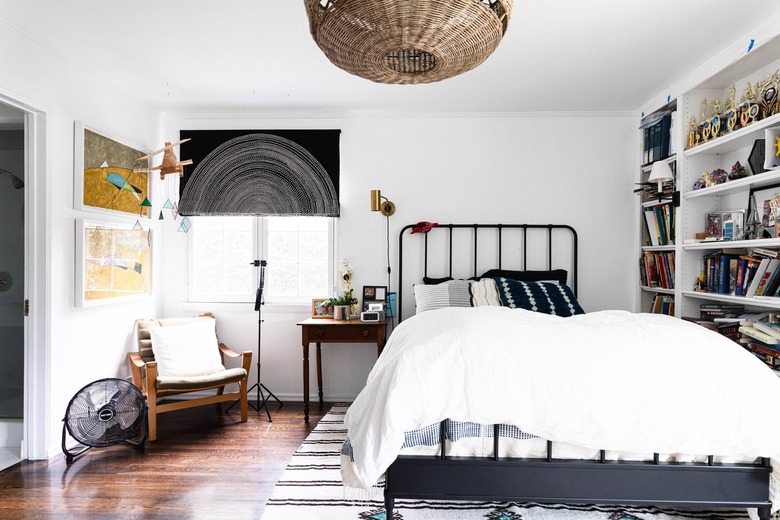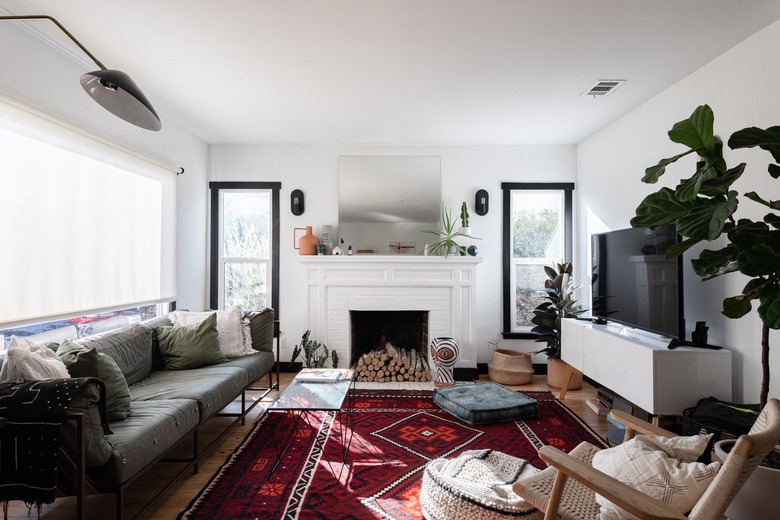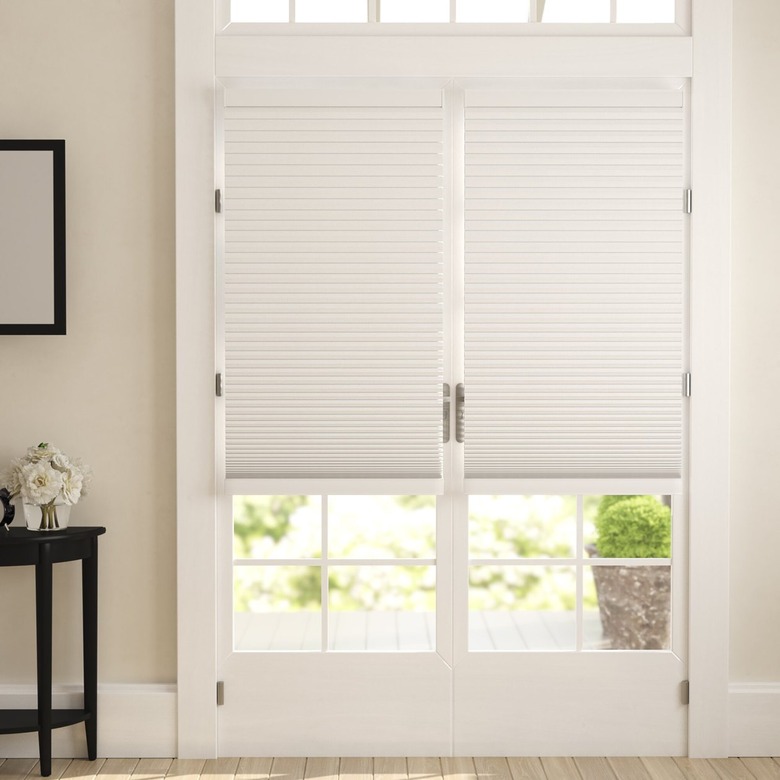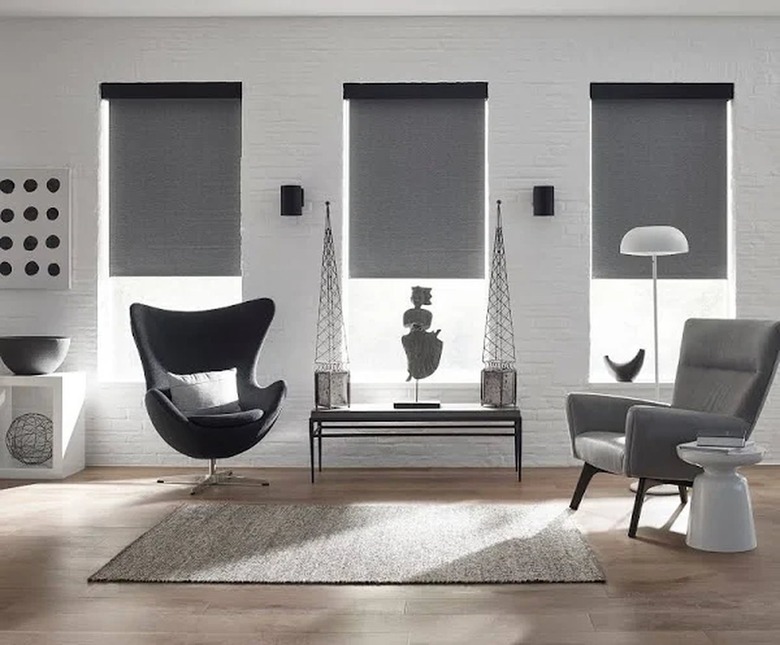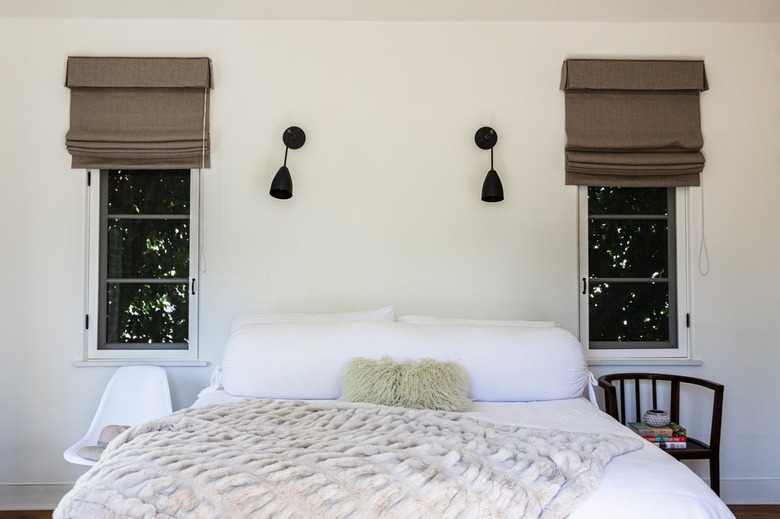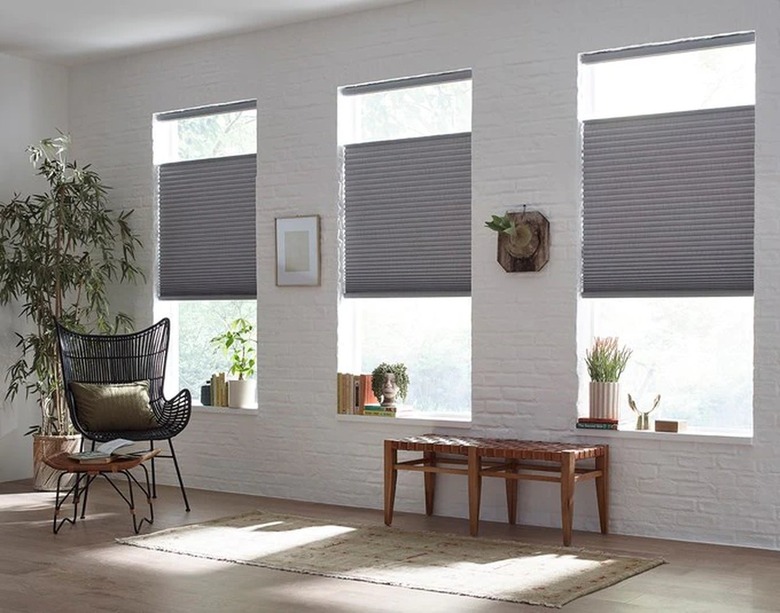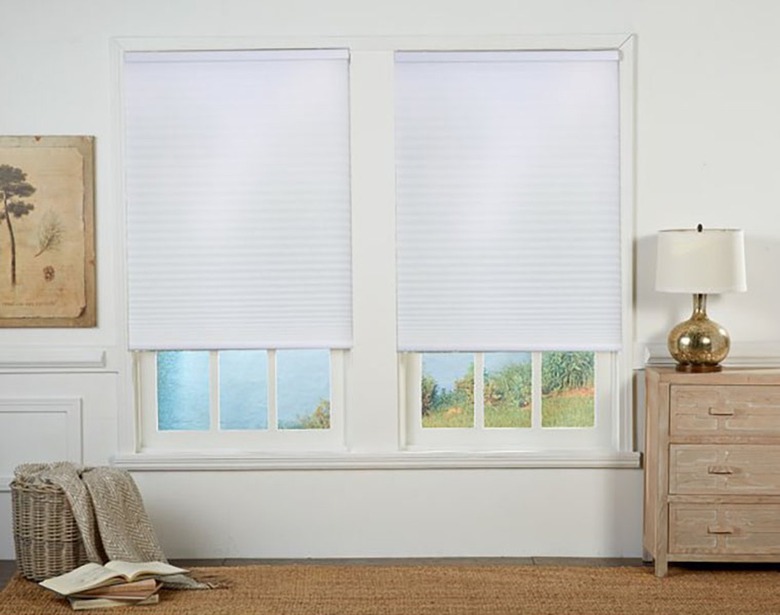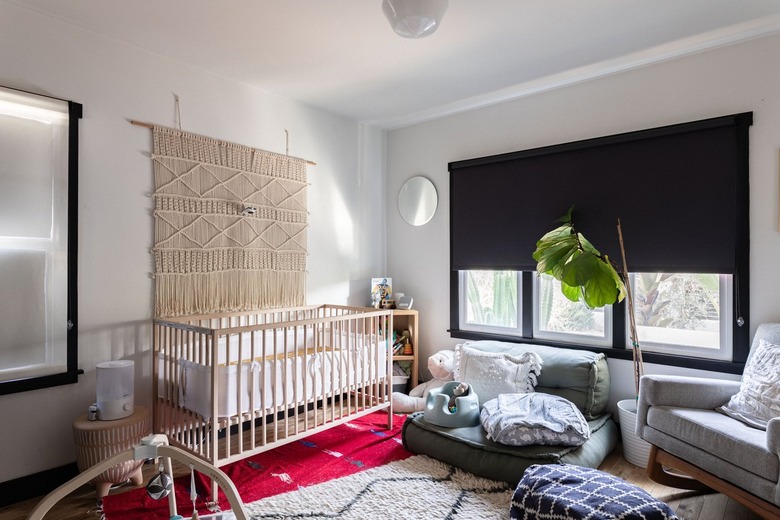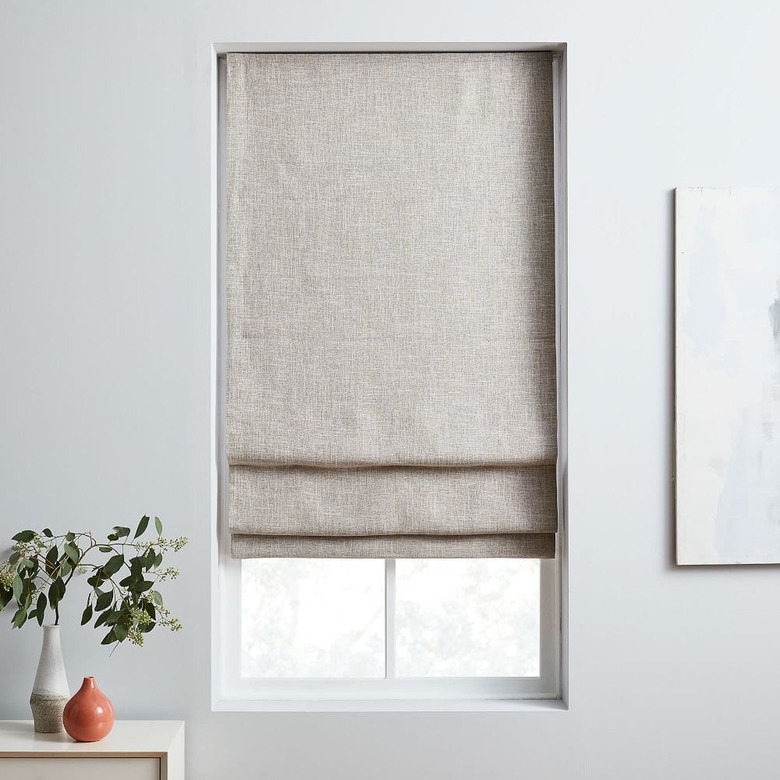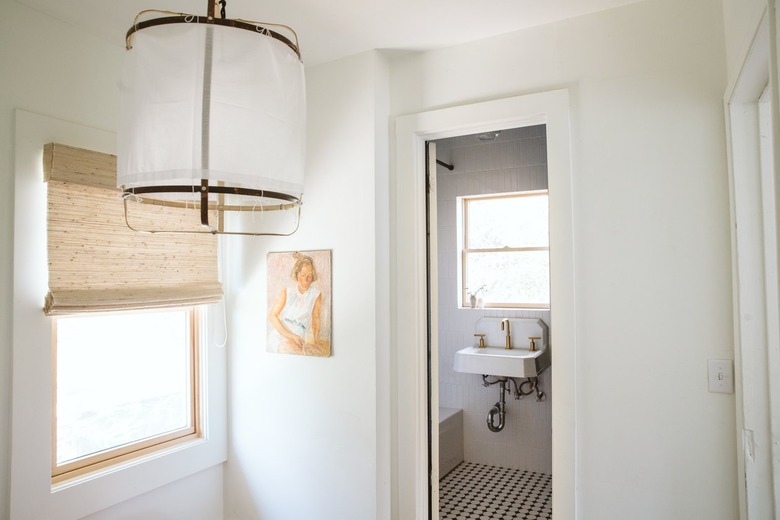The Ultimate Guide To Window Shade Styles
When shopping for window treatments, it's important to not forget about shades. Shades come in a wide range of aesthetics and types, and the right ones can add sophistication or whimsy to a room depending on your ultimate goal.
Shades are also more functional than many other window treatments. Like drapes and blinds, shades can block light and add privacy. Shades, however, are much better at tucking themselves away discretely when you want to enjoy an uninterrupted view of your garden or street.
Whether you moved into a new house or are simply tired of your old window treatments, there are many types of window shades to choose from.
The Differences Between Shades and Other Window Treatments
The Differences Between Shades and Other Window Treatments
When most people talk about window treatments, they often use words interchangeably that don't technically mean the same thing — like curtains and drapes or shades and blinds. Though these are all window treatments, they all serve different functions in home decor, light control, and privacy.
Although often mistaken for each other, curtains and drapes are actually two different window treatments. Less formal, curtains are unlined pieces of fabric used mainly for decorative purposes. They look nice but don't typically serve much function when it comes to blocking light or adding privacy to a room. Drapes, on the other hand, are usually lined and made of much heavier fabric than curtains. Given their heftier nature, drapes will block light, heat, and cold drafts while adding privacy. Both curtains and drapes can be combined with shades to create a layered look — with shades functioning as the light filtering layer and the drapery functioning more as the aesthetic layer.
Like the words "curtains" and "drapes," the terms "blinds" and "shades" also tend to function interchangeably. Blinds, however, are window coverings made from a series of individual slats. They're often made of wood, plastic, vinyl, or metal. Shades, on the other hand, are made of fabric, which are available in a much wider array of colors and configurations than blinds.
Window Shade Styles
Window Shade Styles
Now that you know the precise definition of a window shade, it's time to look at the options.
Cordless Window Shades
Cordless shades are increasingly popular and with good reason. For one, cords simply don't look nice and neat hanging by the window. Even if you try to somehow wrap and secure them, you'll likely have to deal with a tangled mess at some point in time.
Cords also create a safety hazard. Unfortunately, kids and pets can get tangled in window shade cords, sometimes to tragic effect. Having shades that operate with a cord also means getting to the cord to open or close the shade. Depending on the window's location, this may prove a difficult feat.
Blackout Shades
If you need to make a room dark or eliminate light completely, you'll want to look for blackout shades. It's important to understand, however, that blackout shades refer to a fabric quality rather than a specific shade style. A blackout shade is merely one that cuts down on the amount of light in a room. You can get blackout shades in just about any style you want, including bottom-up, roller, honeycomb, and Roman shades.
Although you can get these room darkening shades in various styles, an outside-mount Roman shade may be your best option. Many window shades sit inside the window frame where they could allow some light to peek in around the edges of the shade. An outside-mount Roman shade lets you mount the edge of the shade beyond the edge of the window itself, allowing for a bit more protection.
Natural Woven Shades
Like blackout shades, natural shades are more about the material than the style. Woven from wood, grass, jute, or bamboo, natural shades can be worked into just about any style, including roller blinds and Roman shades. They add natural beauty to a room and offer a wide range of versatility, looking equally at home in a Victorian house as they do in a more contemporary space. They're also a great way to add texture and depth to your windows.
It's of note, however, that natural materials vary. The shade you get may not look identical to the sample you saw in the store, so you'll need to be okay with some variation from one shade to another. You may also need to add a translucent backing to diffuse the light or an opaque one if you wish to block it. Natural blinds often require taping at the sides with decorative tape to prevent them from fraying or showing ragged edges.
Top-Down/Bottom-Up Shades
Traditionally, you mount window shades at the top of the window and then pull them down as needed. Today, however, you can purchase shades that look as if you pulled them up from the bottom of the window. You can also open these shades in the middle of the window, allowing light to shine in from above and below the shade. This is an excellent choice when you want both privacy and natural light. These shades are admittedly pretty cool just for the uniqueness factor, but they also have practical applications.
In some homes, for example, there is a window at the end of the bathtub. This is great if your bathroom gets a lot of natural light but a little uncomfortable if said window faces a neighbor. A top-down bottom-up blind is perfect in this situation. You can pull the blind up far enough to protect your privacy but keep it low enough that light can still shine in the top of the window.
Honeycomb Shades
Honeycombs shades look like pleated shades when they're closed, but their pleats hide a secret. Behind each pleat is a honeycomb-shaped air pocket. This air space serves as insulation when you draw the shade, helping to improve the window's energy efficiency. Honeycomb shades work well with older windows because of this insulation property, but they can still offer an extra layer of protection even with replacement windows.
If you want more insulation, be aware that honeycomb shades, also called cellular shades, are available in double and triple cell configurations for added insulation value. Don't be too quick to sacrifice aesthetics, however. The more cells your honeycomb shades have, the smaller the cells. A shade with very small cells may look out of place in large or deep windows. Single-cell shades are also cheaper.
Roller Shades
Less expensive than many other window treatments, roller shades are a good choice when the view matters. Roller shades are easy to install and hide inside a tube at the top of the window. This setup gets them completely out of the way when you want lots of light and an unobstructed view. Roller shades offer lots of fabric and color choices, giving you a large amount of control over the textures and feel of your room from a design perspective.
Roller shades don't work well for extremely narrow or odd-shaped windows, however. They also tend to have a modern feel, so they may not work well with very old-fashioned or traditional decor. Roller blinds are also best used in low-moisture areas.
Roman Shades
Made of cascading layers of fabric, Roman shades are unique in that you can mount them inside or outside the window. If you choose an inside mount, these shades stay within your window frame and function like other shades. If you mount them outside the window, however, you can make them a bit longer and wider than the window itself, thereby creating the illusion of a larger window.
Roman shades look chic and are on the lower end of the window treatment cost spectrum. They also never seem to go out of style. Their fabric layers are notorious for collecting dust and dirt, though. You can easily vacuum them, but these shades may require a bit more attention than some other shade styles. You can get them made out of almost any fabric, however, so the versatility may be worth a little dusting.
Measuring for Shades
Measuring for Shades
Before you select your window shades, you should first measure your windows, and this is often where mistakes are made. For best results, you'll want to measure to the nearest 1/8 of an inch.
If you intend to mount your shade inside the window frame, you need to measure the width of the window at three different points and the height of the window at three different points. Record the smallest width and largest height and use these numbers when ordering your shade. Remember to measure the depth of your window as well to verify that your window is deep enough to accommodate your shade. (If you're planning to install the shade inside the window frame, this is called an inside mount).
It's important to note that you shouldn't try to account for how much space your shade hardware may consume. The shade manufacturer will do this for you. They know precisely how much space each of the shade styles needs to mount properly.
When mounting shades outside the window (called an outside mount), measure the window height and width again, this time including the window frame. Add 4 inches to the width and 3 inches to the height.
If you're working with an interior designer or a local blind company, you can have your windows measured by a professional so you know the measurements are accurate. If you're ordering your shades online, however, you may need to take the measurements yourself. If you don't feel comfortable doing so, ask a DIY-savvy friend to help you. Accurate measurements are critical to getting a good result.
Buying Your Shades
Buying Your Shades
You have several options when buying window shades, but the best one for you depends largely on how you wish to shop and whether or not you want custom shades. If you like to see things in person and get your hands on them before you commit, you'll want to find a local retailer. If you're looking for something basic, a store like Lowe's, The Home Depot, or Bed Bath and Beyond are good places to start. Specialty retailers and home decor stores will also have shades for you to examine.
Although The Home Depot can usually cut shades for you in the store, understand that it's unlikely you will leave a local retailer with your new shades in hand. To get the perfect fit and exact color you want, the store may need to order your shades for you and call you when they come in. Some stores even offer installation services. If you truly have to have your shades today, you'll find buying outside mount shades off the shelf much easier than finding something to fit your exact window size for an inside mount.
If you want your shades customized and enjoy having lots of choices, consider buying from an online retailer. The Shade Store and Blinds.com both have good reputations and tons of shades from which to choose. Ordering online is a great option, but there won't be anyone to check your window measurements. Some online retailers offer a customer service line that will talk you through measuring, however, and some are willing to replace mismeasured blinds at no cost.
References
- The Shade Store Blog: Different Types of Window Treatments: Drapes vs. Curtains vs. Blinds and More
- Blinds Chalet: Window Blinds Measuring Instructions
- A Little Design Help: Pros and Cons of Woven Wood Shades
- A Little Design Help: Pros and Cons of Roman Shades
- Zebra Blinds: What Are the Pros and Cons of Roller Window Shades
- Bloomin' Blinds: Single Cell vs. Double Cell
